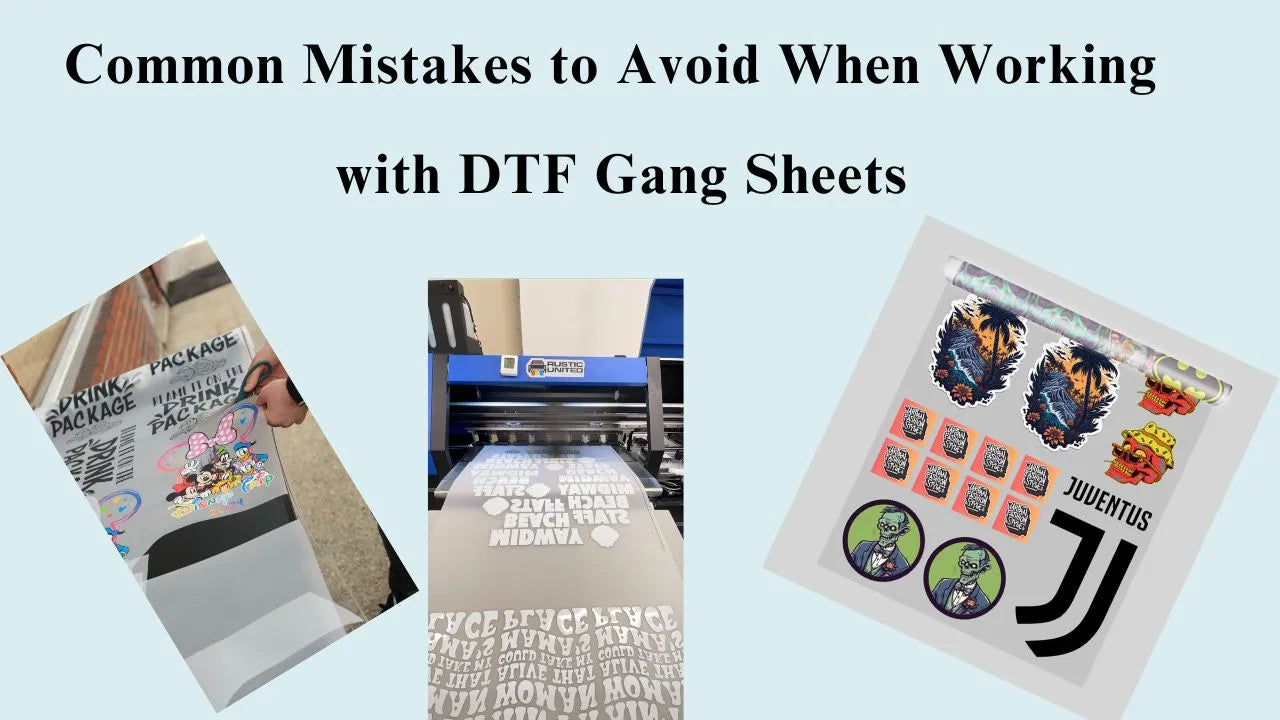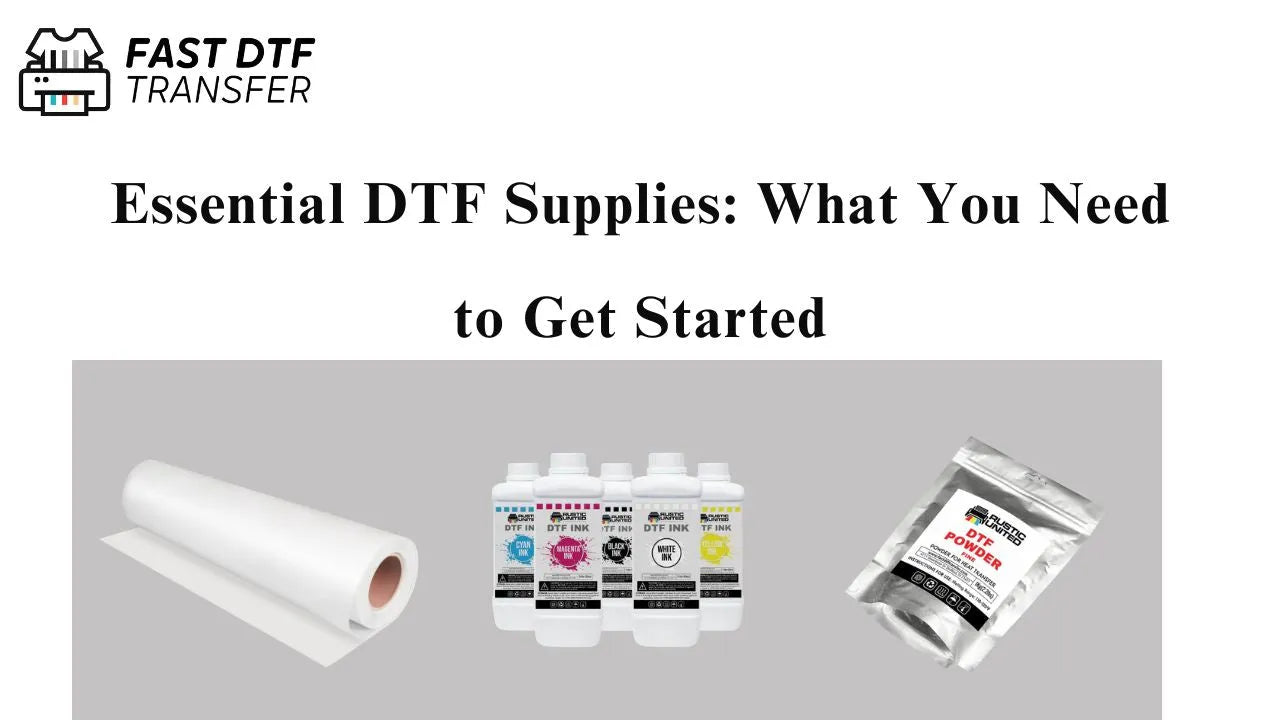
DTF Transfer Film: Transform Your Designs into Durable, Washable Prints That Last

DTF Transfer Film: Durable, Washable Prints That Last
Durability is key in custom printing. DTF (Direct to Film) Transfer Film offers vibrant, long-lasting designs that stay intact after multiple washes. In this guide, we’ll explore how Direct to Film Transfer works, its benefits, and why it’s perfect for custom apparel printing.
What is Direct to Film Transfer?
Direct to Film Transfer is a special film used in the Direct-to-Film (DTF) process. A design is printed onto the film, then transferred to fabric using heat and pressure. This method creates vibrant, durable prints that adhere well to various fabrics.
Unlike traditional methods like screen printing or HTV, DTF offers flexibility, making it ideal for many types of custom products.
Benefits of Using Direct to Film Transfer
Durability
DTF prints are resistant to fading, cracking, and peeling, even after many washes, making them ideal for custom apparel.
High-Quality Prints
DTF captures fine details and vibrant colors, ensuring your designs remain crisp and professional.
Versatility
DTF works on cotton, polyester, blends, and even leather, making it suitable for T-shirts, hoodies, bags, hats, and more.
No Minimum Order
Unlike screen printing, DTF works for both small and large orders, making it a great solution for businesses of all sizes.
Cost-Effective
DTF is cheaper than embroidery or screen printing, especially for small runs, with no expensive setup costs.
How to Use Direct to Film Transfer
Prepare Your Design
Ensure your design is in high resolution (300 DPI) for the best results.
Print the Design
Print the design onto Direct to Film Transfer using a specialized DTF printer and the right ink. The design should be in reverse, as the film will be flipped during transfer.
Apply the Transfer to Fabric
Place the printed film onto the fabric and use a heat press. The heat and pressure will bond the ink to the fabric, leaving a sharp, durable design.
Peel and Set
After the transfer is complete, allow the fabric to cool and peel off the transfer film. Your design will be fully transferred with vibrant colors.
Tips for Using Direct to Film Transfer
- Use High-Quality Inks: Always use good-quality DTF inks to ensure longevity.
- Check Fabric Compatibility: Test fabric types before printing, as some may need adjustments in temperature or pressure.
- Proper Heat Settings: Follow the recommended settings to avoid damaging the fabric or a poor transfer.
- Pre-Press Fabric: Pre-press fabric to remove wrinkles and moisture for better transfer.
Conclusion
Direct to Film Transfer is a reliable, cost-effective solution for creating custom apparel. With its high-quality prints and versatility, DTF is the perfect choice for professional-grade, long-lasting designs. Whether for personal or business use, DTF helps bring your designs to life with ease.
1. What is Direct to Film Transfer?
Direct to Film Transfer is a special type of film used in the Direct-to-Film (DTF) printing process. Designs are printed onto the film and then transferred to fabric using heat and pressure.
2. What materials can I use Direct to Film Transfer on?
Direct to Film Transfer works on various fabrics such as cotton, polyester, blends, and even non-textile materials like leather.
3. How do I apply Direct to Film Transfer to fabric?
After printing the design onto the DTF film, place it onto the fabric and use a heat press. Follow the recommended temperature, time, and pressure settings for the best result.
4. Is Direct to Film Transfer durable?
Yes, Direct to Film Transfer creates prints that are highly durable. The prints are resistant to fading, cracking, and peeling, even after multiple washes.
5. Can Direct to Film Transfer be used on dark fabrics?
Yes, Direct to Film Transfer works well on dark fabrics. The white ink used in the DTF process ensures that the design remains vibrant even on black or dark-colored materials.
6. How long does it take to transfer a design with Direct to Film Transfer?
The transfer process is quick. It usually takes just a few seconds to transfer a design from Direct to Film Transfer to fabric using a heat press.
7. Can Direct to Film Transfer be reused?
No, DTF Transfer Film is designed for single use. After transferring the design to fabric, the film cannot be reused.
8. Do I need special equipment to use Direct to Film Transfer?
Yes, you need a DTF printer to print the design onto the transfer film, as well as a heat press to transfer the design to the fabric.
9. Can I use Direct to Film Transfer for small orders?
Yes, Direct to Film Transfer is perfect for both small and large orders. Unlike traditional screen printing, it doesn’t require a minimum order quantity.
10. Is Direct to Film Transfer cost-effective?
Yes, Direct to Film Transfer is a cost-effective solution, especially for smaller print runs. It eliminates the need for expensive setup costs or special equipment, making it accessible for small businesses and hobbyists.


Leave a comment
This site is protected by hCaptcha and the hCaptcha Privacy Policy and Terms of Service apply.